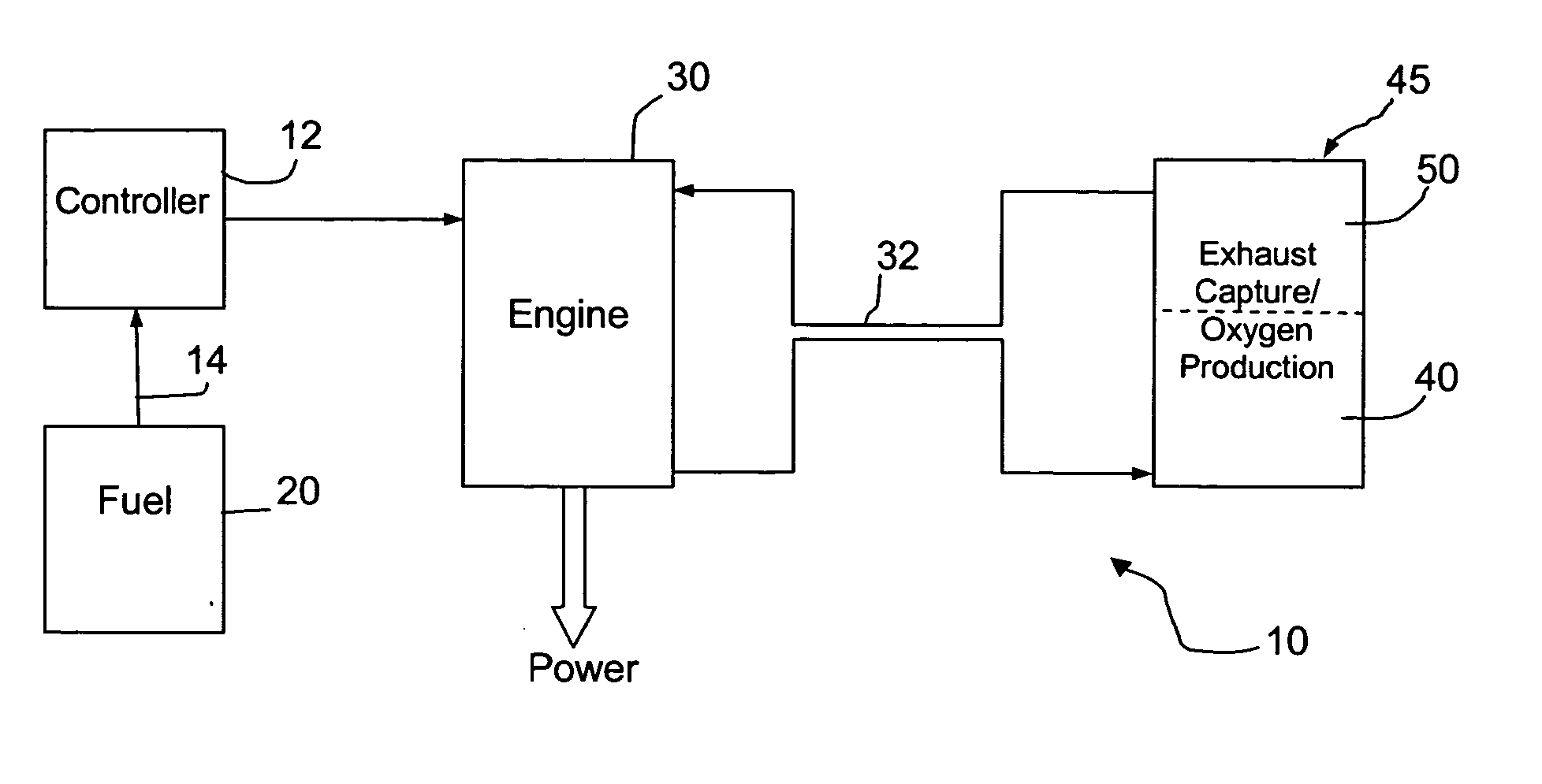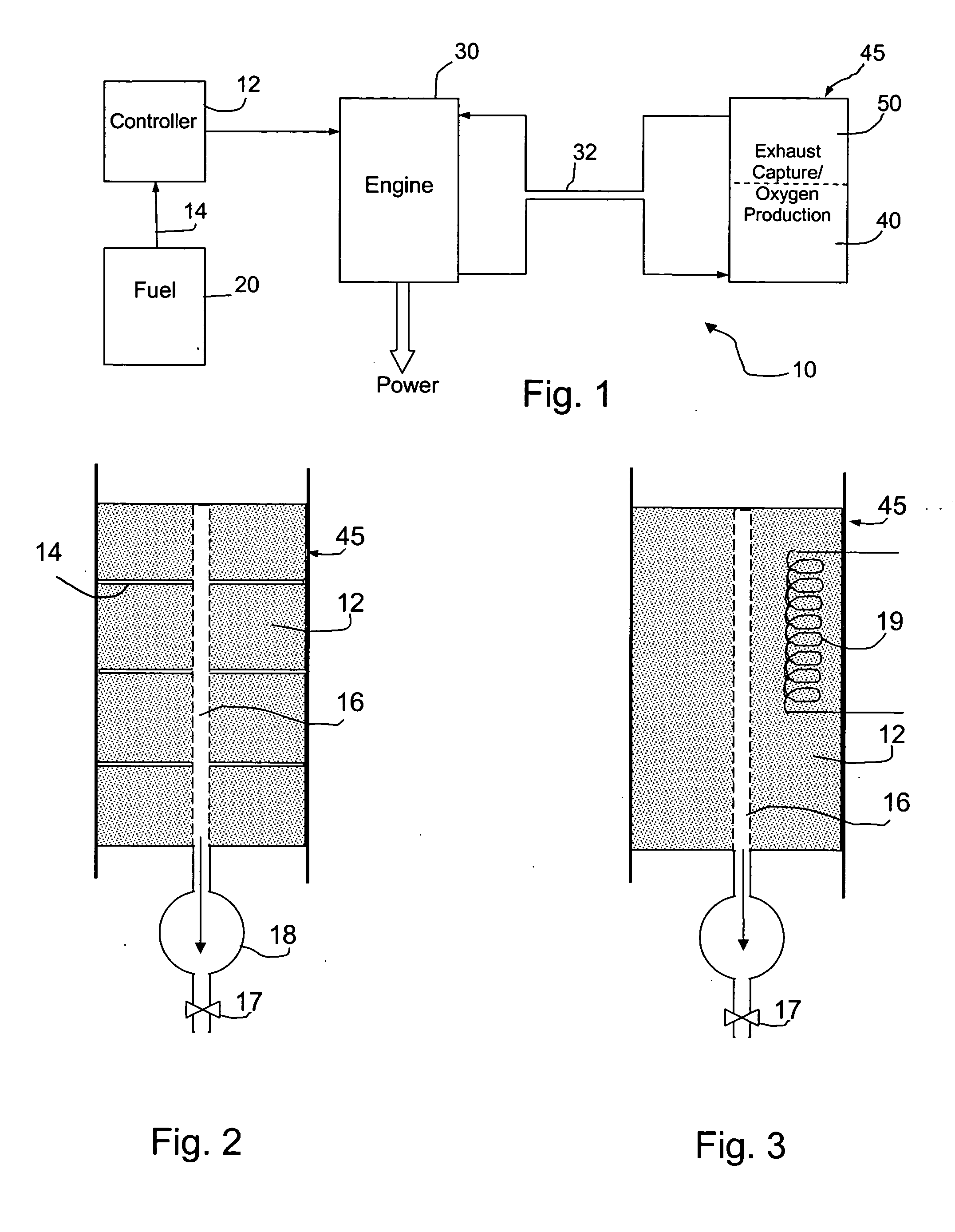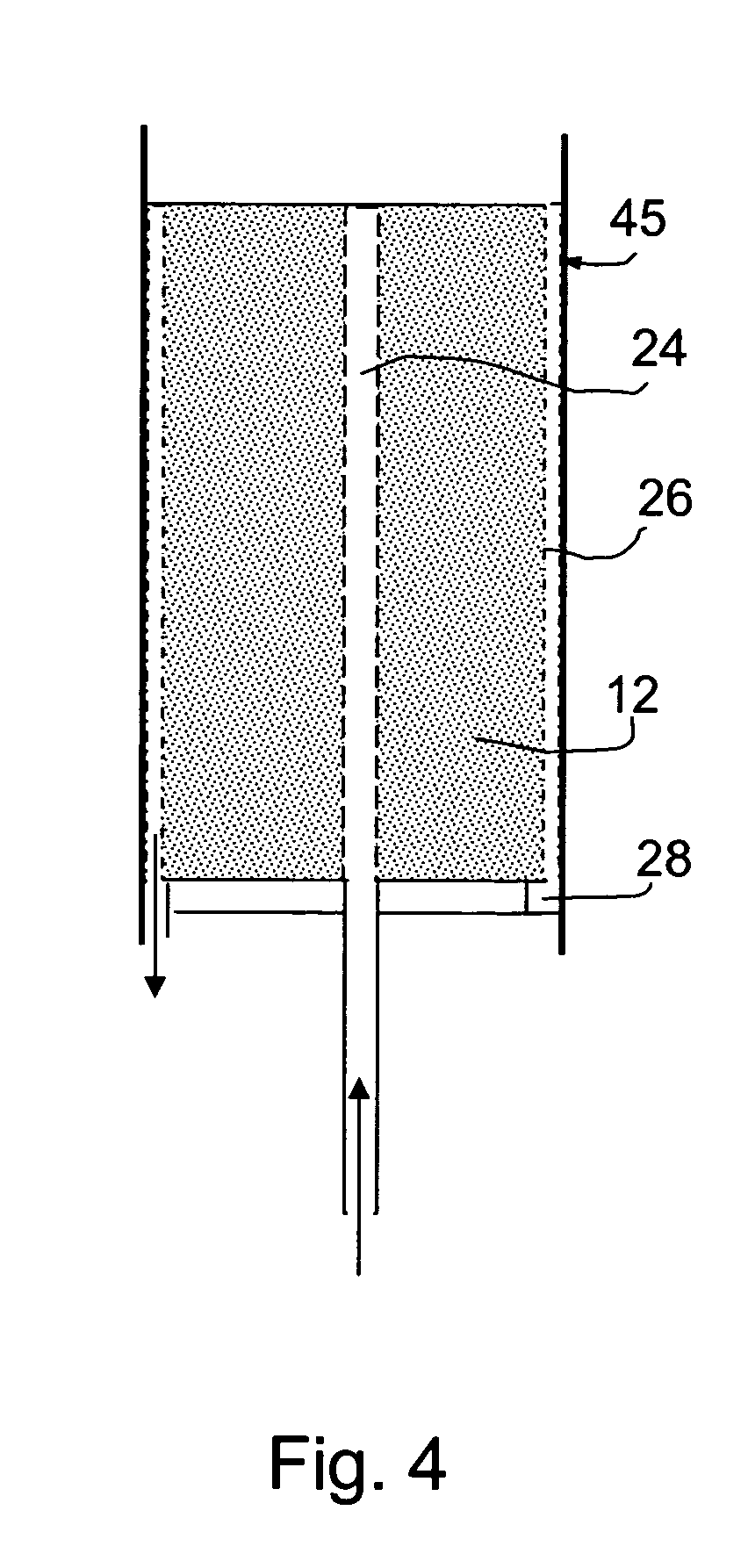Fuel handling techniques for a fuel consuming generator
- Summary
- Abstract
- Description
- Claims
- Application Information
AI Technical Summary
Benefits of technology
Problems solved by technology
Method used
Image
Examples
example 1
[0031] By way of illustration, when butane is used as the fuel, the combustion reaction proceeds according to the formula:
C4H10+6.5 O2→4 CO2+5 H2O. (1)
This reaction can be followed by exhaust capture as solid species and oxygen production using a combination of potassium superoxide (KO2) and sodium peroxide (Na2O2):
4 CO2+5H2O+4KO2+7Na2O2→2K2CO3+2Na2CO3+10NaOH+6.5O2 (2)
[0032] Reaction (1) produces gaseous combustion products and sensible enthalpy for operation of a heat engine. Reaction (2) captures those gaseous products as solids, and produces the oxygen flow required for further operation of the heat engine.
[0033] Another option for this class of operation includes the same combustion process with exhaust capture and oxygen production using a combination of potassium superoxide (KO2) and potassium oxide (K2O):
4 CO2+5 H2O+8.67 KO2+4.67 K2O→4 K2CO3+10 KOH+6.5 O2 (3)
example 2
[0034] Still another variation utilizes calcium oxide (CaO) and potassium superoxide (KO2). It is preferable to contact these sorbents sequentially, with the exhaust first reacting with the calcium oxide to convert the water to calcium hydroxide (Ca(OH)2) followed by carbon dioxide capture by potassium superoxide to produce the requisite oxygen. The simplest means of achieving a stoichiometric oxygen balance for this system is to use a fuel such as butene (C4H8), which requires 6 O2 for stoichiometric combustion, according to Equation (4):
C4H8+6 O2→4 CO2+4 H2O (4)
Selective reaction of calcium oxide with water vapor produces calcium hydroxide and unreacted carbon dioxide:
4 CO2+4 H2O+4 CaO→4 CO2+4 Ca(OH)2 (5)
This can be followed by contacting the carbon dioxide with potassium superoxide, producing the requisite oxygen for overall balance:
4 CO2+8 KO2→4 K2CO3+6 O2. (6)
example 3
[0035] Yet another variation allows combustion of butane, for example, with sequential water and carbon dioxide absorption, together with oxygen production. The combustion reaction is:
C4H10+6.5 O2→4 CO2+5 H2O (7)
The first absorption stage uses calcium peroxide as the sorbent for the water vapor, producing a net oxygen output:
4 CO2+5 H2O+5 CaO2→4 CO2+5 Ca(OH)2+2.5 O2 (8)
Subsequent reaction of the carbon dioxide / oxygen mixture uses a tailored sorbent combination to produce the net stoichiometric oxygen required for butane combustion:
4 CO2+2.5 O2+5.33 KO2+2.67 KOH+1.33 CaO→4 K2CO3+1.33 Ca(OH)2+6.5 O2 (9)
The primary product of the reaction of calcium oxide with the combustion products is calcium hydroxide. Other products, such as calcium carbonate, are also formed, but their rates of formation much lower and their presence is not significant in the present systems.
[0036] As an alternative to calcium, metal salts could be used as the absorbent. The metal salts could be ma...
PUM
 Login to View More
Login to View More Abstract
Description
Claims
Application Information
 Login to View More
Login to View More - R&D
- Intellectual Property
- Life Sciences
- Materials
- Tech Scout
- Unparalleled Data Quality
- Higher Quality Content
- 60% Fewer Hallucinations
Browse by: Latest US Patents, China's latest patents, Technical Efficacy Thesaurus, Application Domain, Technology Topic, Popular Technical Reports.
© 2025 PatSnap. All rights reserved.Legal|Privacy policy|Modern Slavery Act Transparency Statement|Sitemap|About US| Contact US: help@patsnap.com



